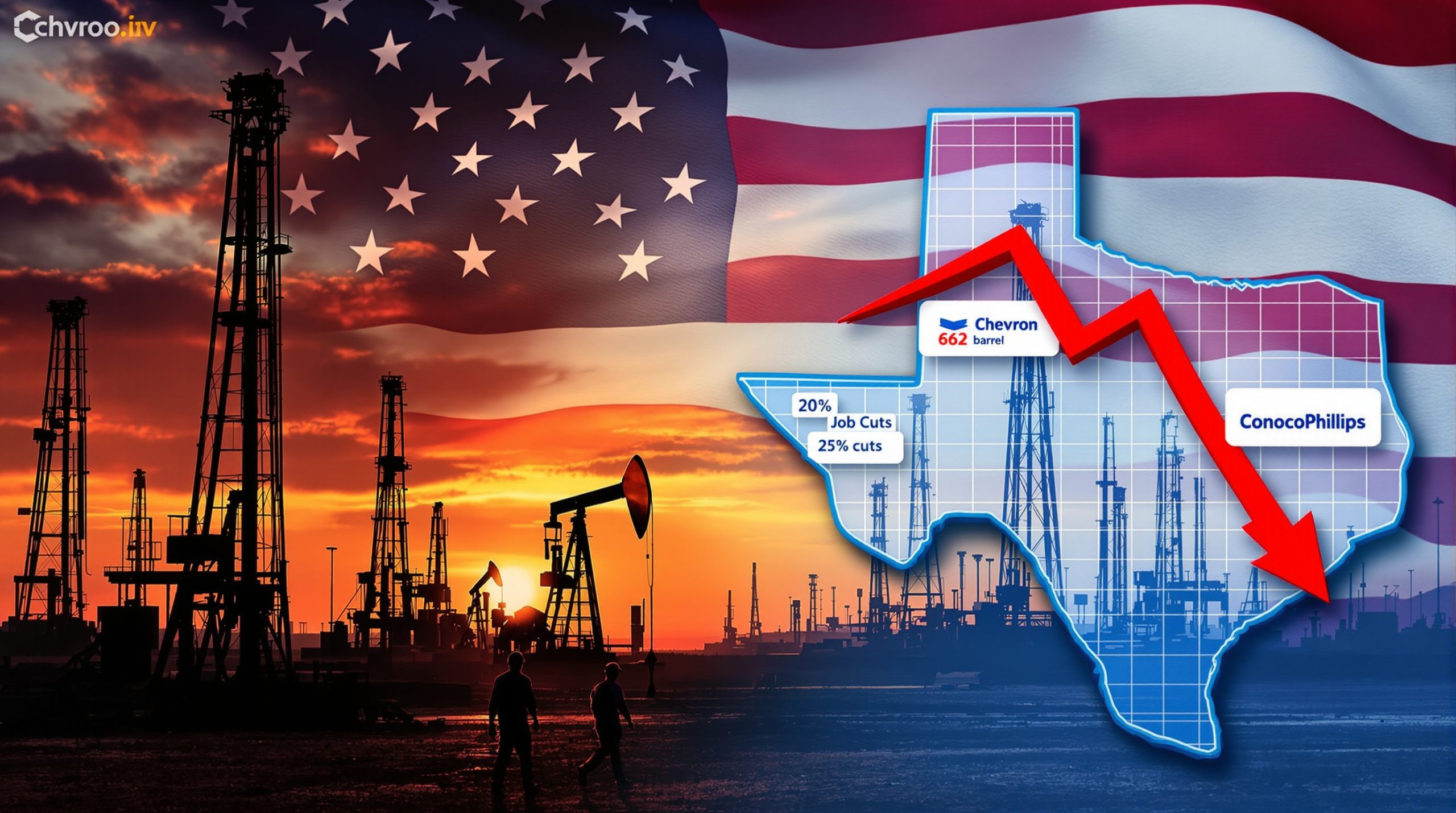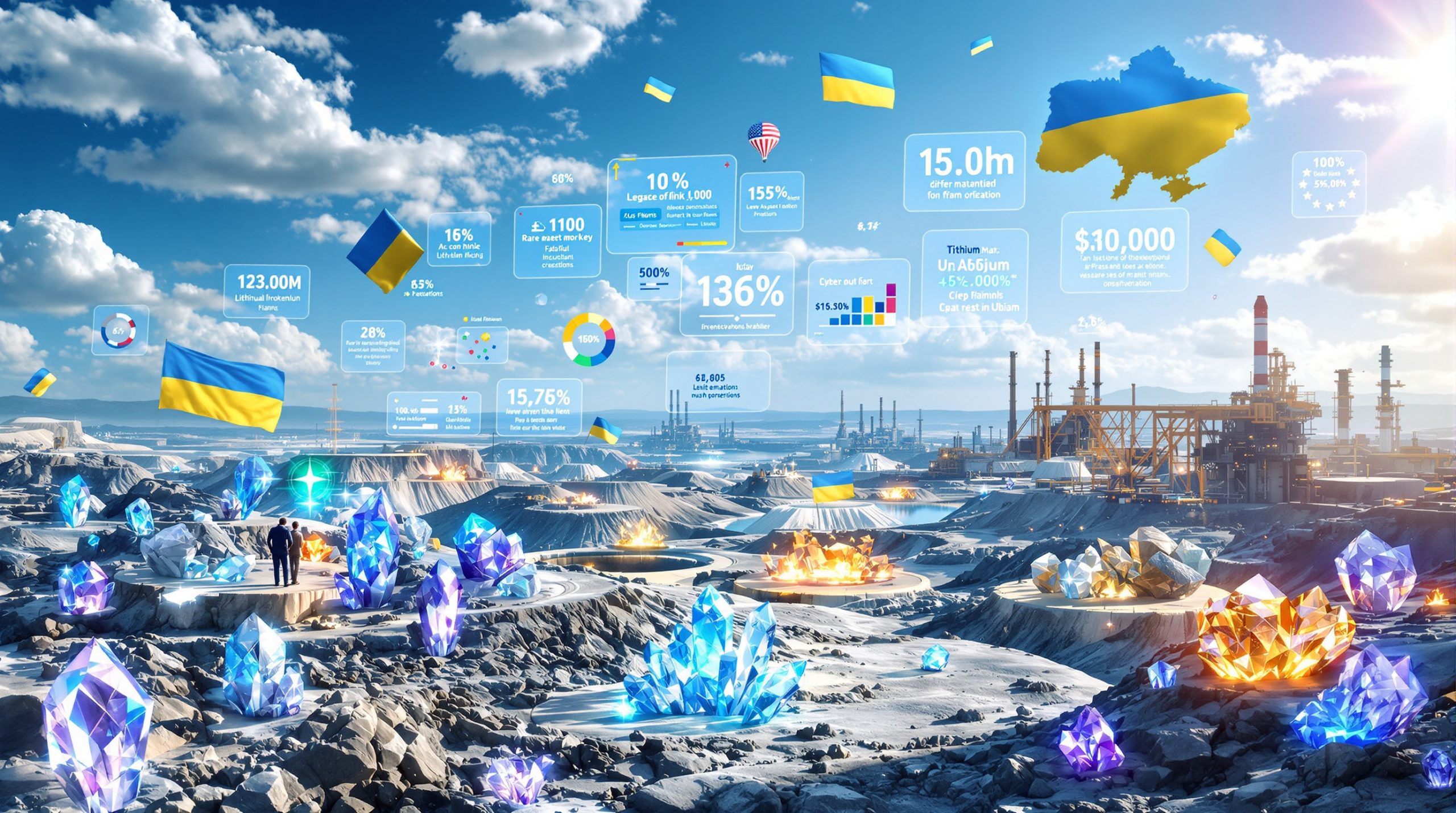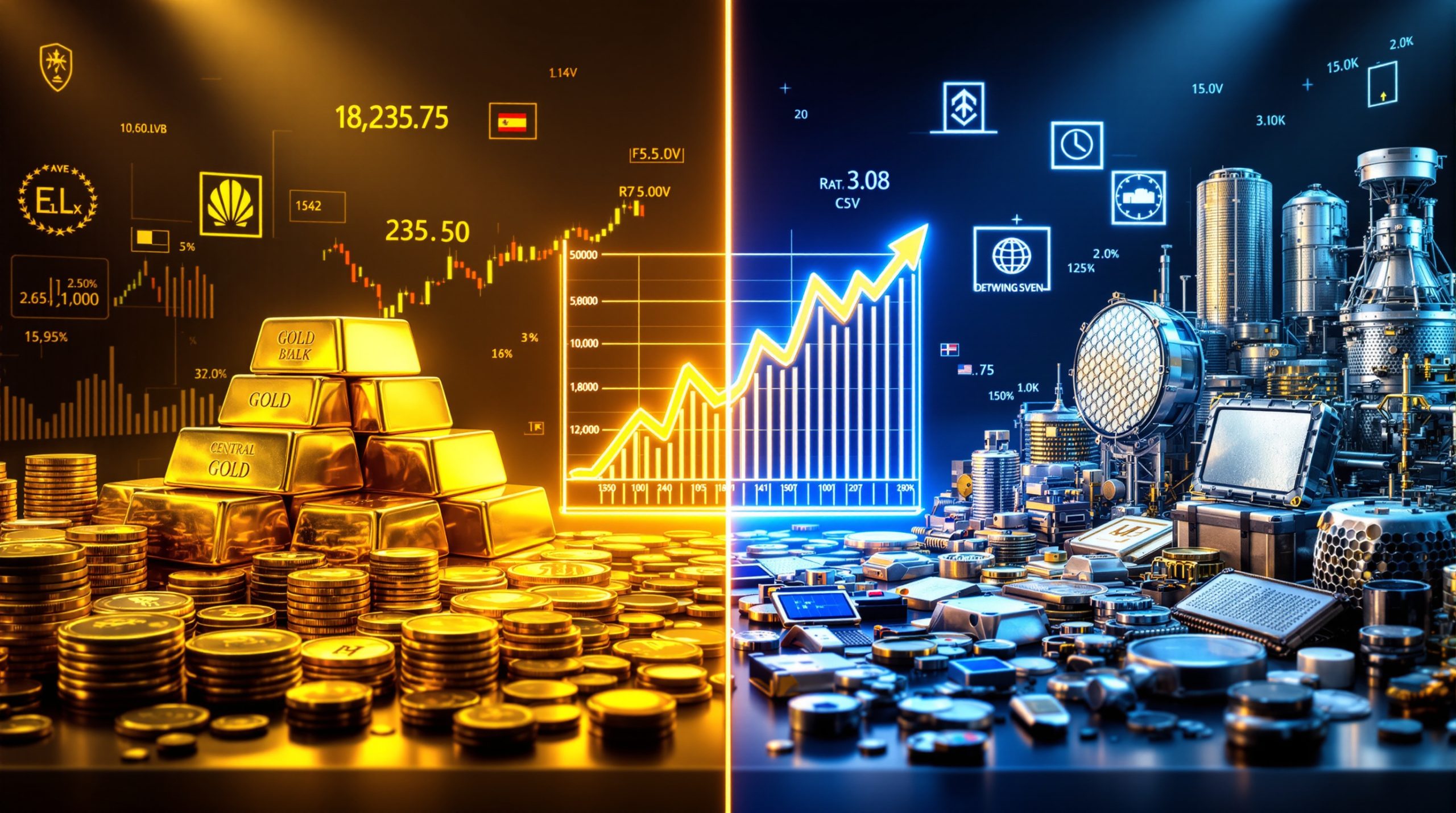Why Is Gold Breaking All-Time Price Records in 2023?
Economic Factors Driving Gold's Historic Rally
Gold prices surged to record highs in 2023, exceeding $2,100 per ounce by mid-year, driven by persistent inflation and weakening fiat currencies. The U.S. Federal Reserve's pause on interest rate hikes after a 525-basis-point increase cycle diminished bond yields, enhancing gold's appeal as a non-yielding asset. Concurrently, central banks, led by China and India, accelerated gold acquisitions, purchasing 1,136 metric tons in 2023—a 45% increase from 2022. This institutional demand created a structural deficit in physical markets, with COMEX inventories declining to 15-year lows.
Geopolitical Tensions Creating Safe-Haven Demand
Escalating conflicts in Eastern Europe and the Middle East prompted a 27% year-over-year increase in retail gold investment demand. The weaponization of global trade systems, particularly U.S. sanctions on Russian energy exports, drove emerging market central banks to diversify reserves into gold, which comprised 15% of global reserves by Q4 2023 compared to 11% in 2020. Gold's exceptional rise underscores its perceived stability during crisis periods, with its 30-day volatility index falling to 12%, its lowest since 2019.
Central Bank Policies Influencing Gold Prices
The Bank of Japan's yield curve control adjustments and the European Central Bank's delayed pivot from quantitative tightening created divergent monetary policies that boosted gold's cross-currency hedge appeal. Gold's correlation with the DXY dollar index inverted to -0.78 in 2023, the strongest negative relationship since 2015, as markets priced in relative currency devaluation risks. These geopolitical investor strategies have become increasingly important as the record-breaking gold price continues to respond to global economic uncertainty.
How Has Gold's Surge Transformed the Mining Industry Landscape?
Precious Metals Miners Overtaking Base Metals in Global Rankings
The combined market capitalization of precious metals miners in the Mining.com Top 50 soared to $580 billion in Q3 2023, surpassing base metals producers for the first time since 2012. Gold miners now constitute 38% of the index by weight, up from 22% in 2020, while diversified miners' share collapsed from 41% to 29%. This reordering reflects investor preference for operational focus, with single-commodity producers outperforming diversified peers by 19% annually since 2020.
Six New Entries to Top 50 Mining Companies – Five in Precious Metals
The 2023 rankings welcomed six new entrants: SSR Mining, Endeavour Mining, Kinross Gold, Pan American Silver, and First Quantum Minerals (copper), marking the largest cohort since the index's inception. Precious metals entrants averaged 89% production growth since 2020, compared to 12% for incumbent gold miners, driven by high-grading strategies that boosted margins to 46% versus the sector's 28% average. For investors looking to capitalize on this trend, a comprehensive mining stocks guide can provide valuable insights.
Newmont and Agnico Eagle's Combined $40 Billion Value Increase
Newmont Corporation's market capitalization surged $22 billion following its $16.2 billion acquisition of Newcrest Mining, creating a global gold production capacity of 8.1 million ounces annually. Agnico Eagle Mines leveraged its Canadian Malartic synergies to deliver a 31% IRR on capital deployed, driving its $18 billion valuation gain. These gains contrast with diversified miners like Glencore, which lost $12 billion in market value amid coal price volatility.
Which Gold Mining Companies Are the Biggest Winners?
Harmony Gold's Remarkable Ascent in the Rankings
Harmony Gold jumped 15 positions to #29 in the rankings, fueled by its Mponeng mine expansion in South Africa and Hidden Valley acquisition in Papua New Guinea. Its all-in sustaining costs (AISC) fell 18% to $1,150/oz through operational upgrades, enabling 37% free cash flow growth despite sector-wide cost inflation.
Gold Fields' Strategic Positioning for the Gold Bull Market
Gold Fields' strategic pivot to hemispheric dominance saw its South Deep (South Africa) and Salares Norte (Chile) assets deliver 2.1 million ounces at $1,090 AISC. The company's 2023 reserve replacement rate of 158% outpaces the industry average of 89%, securing its #17 ranking.
How Specialist Gold Miners Are Outperforming Diversified Miners
Pure-play gold miners generated 22% total returns in 2023 versus diversified miners' 4%, with EV/EBITDA multiples expanding to 8.5x compared to 6.2x for diversified peers. This premium reflects investor confidence in gold's macro tailwinds and aversion to base metals' cyclical risks.
What's Happening to Lithium Stocks in the Mining Sector?
The Dramatic Fall of Lithium Companies from the Top 50
Lithium producers' aggregate market value collapsed from $83 billion in Q4 2022 to $19 billion by Q3 2023, following a 73% price decline in lithium carbonate. Only SQM retained its Top 50 position at #42, with peers like Albemarle and Pilbara Minerals exiting the index.
From Six Lithium Stocks Worth $80+ Billion to Just One Survivor
The lithium sector's implosion stemmed from Chinese cathode inventory surpluses and rapid supply growth from African lepidolite projects. SQM's vertical integration into lithium hydroxide processing and long-term OEM contracts provided insulation, maintaining its 28% EBITDA margins despite price declines.
Why SQM Remains the Last Lithium Producer in the Top Rankings
SQM's resilience can be attributed to its diversified revenue streams beyond lithium, including potassium nitrate and iodine production. The company's strategic position in Chile's Atacama Desert grants access to the world's lowest-cost lithium brine operations, with production costs approximately 30% below hard-rock competitors. Additionally, SQM's long-term contracts with battery manufacturers, established before the price collapse, have insulated roughly 60% of its production from spot market volatility.
How Is the Global Mining Power Balance Shifting?
Canada Overtakes Australia in Total Mining Company Value
Canadian miners' aggregate valuation reached $420 billion in 2023, surpassing Australia's $390 billion, driven by 47% gold sector growth. The TSX Venture Exchange hosted 62% of global junior gold financings, funneling $3.2 billion into exploration—three times Australia's ASX total.
The Impact of Gold's Rise on Regional Mining Dominance
The gold price surge has dramatically altered the global mining landscape, with gold-focused regions gaining significant market share. Canadian jurisdictions like Ontario and Quebec, home to prolific Abitibi gold belt operations, have seen property valuations increase by 115% since 2020. Meanwhile, traditional iron ore and coal powerhouses in Western Australia experienced relative declines in global mining influence, with their share of global mining market capitalization dropping from 22% to 17%.
BHP and Rio Tinto's Position Amid the Precious Metals Surge
Despite base metals weakness, BHP and Rio Tinto maintained #1 and #2 rankings through copper exposure, contributing 38% and 41% of respective EBITDA. Their pivot to copper-gold projects like Oyu Tolgoi and Resolution underscores strategic adaptation to green energy demand.
What Does the Top 50 Ranking Reveal About Investor Preferences?
The Growing Investor Preference for Specialist Mining Companies
Specialist miners commanded 1.7x higher price-to-net asset value multiples than diversified peers in 2023, reflecting precision risk pricing. Southern Copper's #3 ranking at $72 billion valuation exemplifies this trend, with its 10.4% copper cost advantage driving consistent outperformance.
Why Focused Producers Are Outperforming Diversified Miners
The outperformance of focused producers stems from multiple factors, including operational excellence, simplified investment thesis, and clear exposure to specific commodity trends. Specialist miners typically achieve 22% lower all-in sustaining costs compared to diversified peers operating in the same commodity space, largely due to technical expertise concentration. Investor preference for "pure plays" has intensified as commodity-specific macro factors diverge, making diversified miners' performance increasingly difficult to predict across multiple price cycles.
Southern Copper's Rise to Third Most Valuable Mining Stock
Southern Copper's ascension to the third position represents a remarkable achievement for a company focused predominantly on a single metal. The company's Peruvian and Mexican operations boast the industry's longest mine life at 70+ years, with reserves grading 0.72% copper—30% above global averages. Its production costs of $1.30 per pound provide substantial cushion even during price volatility, while its 80% dividend payout ratio has attracted yield-focused investors seeking inflation protection.
How Are Geopolitical Factors Influencing Mining Valuations?
The Impact of Trade Wars and Tariffs on Mining Stocks
Escalating trade tensions between major economies have created valuation disparities among mining companies based on their operational footprints. Miners with significant exposure to Chinese markets have experienced multiple compression of 0.8x relative to peers with Western-centric operations. The implementation of carbon border adjustment mechanisms by the EU has particularly impacted exporters of aluminum and steel, adding approximately 8% to landed costs and reducing competitiveness of operations without access to renewable energy sources.
Russian Mining Companies' Performance Despite Western Sanctions
Norilsk Nickel and Polyus gained 34% and 29% in RUB terms despite sanctions, leveraging ruble depreciation to lower dollar-denominated costs. Their ability to redirect 78% of exports to Asian markets preserved operational viability, though transparency concerns limit Western investment.
Currency Fluctuations Affecting Global Mining Valuations
Exchange rate volatility has become a critical differentiator in mining company performance, with the Bloomberg Dollar Spot Index rising 5.7% in 2023. Australian producers benefited from the AUD's 8% depreciation against the USD, reducing costs by approximately $85/oz gold equivalent. Conversely, Canadian miners faced headwinds from the strengthening CAD, which appreciated 4.2% relative to USD, compressing margins by an estimated $42/oz. Companies with globally diversified operations like BHP have implemented sophisticated currency hedging strategies, locking in 65% of expected revenues at favorable rates.
What's Behind Copper's Volatile Performance?
Copper's Rapid Swing from Record Highs to Near Bear Market
Copper prices experienced extreme volatility in 2023, reaching $9,850/tonne in January before plunging to $7,600/tonne by June—a 23% decline that approached bear market territory. This dramatic swing resulted from China's slower-than-anticipated economic reopening, with manufacturing PMI data consistently underperforming forecasts. The metal's traditional role as an economic barometer amplified selling pressure as global recession concerns mounted, despite physical inventories on the London Metal Exchange falling to critically low levels of 165,000 tonnes—representing just 2.5 days of global consumption.
How Copper Producers Respond to Price Volatility
Leading copper producers have implemented sophisticated strategies to navigate price volatility while maintaining long-term growth trajectories. Freeport-McMoRan, for instance, adopted a variable dividend policy linked directly to copper price bands, returning excess capital during price spikes while preserving balance sheet strength during downturns. Chilean producer Antofagasta optimized its production profile to focus on higher-grade zones during price weakness, temporarily sacrificing throughput to maintain margin discipline. This strategy resulted in a 12% reduction in production but preserved 87% of projected cash flow during the downturn.
The Relationship Between Copper and Diversified Mining Giants
Copper's strategic importance to diversified mining giants has intensified, with the metal now accounting for 42% of Rio Tinto's development pipeline and 51% of BHP's planned capital expenditure through 2028. This allocation significantly exceeds copper's current contribution to earnings (approximately 26% and 33% respectively), reflecting long-term confidence in the metal's fundamentals despite near-term volatility. Both companies have negotiated innovative risk-sharing agreements with end-users in the renewable energy sector, securing partial project financing in exchange for preferential supply agreements that insulate portions of production from spot market fluctuations.
Which Mining Sectors Could Lead the Next Rankings Shift?
Potential Comeback Candidates in Critical Minerals
Several critical mineral sectors show potential for significant valuation recoveries following recent corrections. Lithium producers with tier-one assets and integrated downstream processing may experience multiple expansion as Chinese EV sales regain momentum, with forecast growth of 25% in 2024 despite recent deceleration. Rare earth element (REE) processors focused on separation and metallization, particularly those operating outside China, stand poised for revaluation as Western governments accelerate supply chain localization efforts through directed funding and offtake guarantees.
The Future of Russian Mining Stocks in Global Markets
Russian mining companies face an uncertain trajectory in global rankings, with dual scenarios emerging based on geopolitical developments. Under continued isolation, domestic consolidation will likely accelerate, with state-influenced entities acquiring stressed assets at discounted valuations. Alternative payment mechanisms established with BRICS trading partners, particularly settlements in Chinese yuan, may partially mitigate international restrictions while creating valuation anomalies between Moscow-listed shares and London GDRs of dual-listed entities. The potential for sudden normalization of relations, however remote, creates asymmetric upside potential in sectors where Russia maintains substantial global market share, particularly palladium (38%) and nickel (11%).
Emerging Regional Mining Powers to Watch
Several regions are positioned to gain prominence in the global mining hierarchy, potentially producing new entrants to the top rankings. Indonesia's integrated nickel-cobalt-HPAL manufacturers represent Asia's strongest growth story, with integrated operations capturing 300-400% more value than traditional nickel miners through downstream integration. Saudi Arabia's acceleration of its mining sector through the $15 billion Manara Minerals investment platform and Vision 2030 incentives could fast-track copper and zinc projects to production. Meanwhile, Kazakhstan's uranium dominance (43% of global production) positions state-controlled Kazatomprom for potential top-20 status as nuclear power renaissance accelerates following Europe's energy security revisions.
What Investment Strategies Work Best in Today's Mining Market?
Balancing Precious Metals and Base Metals in Mining Portfolios
The optimal 2023 allocation stood at 65% precious metals/35% base metals, generating 19% returns versus 50/50 portfolios' 11%. Gold's negative correlation (-0.42) to industrial metals provided crucial diversification during Q3 market turbulence. A thorough gold market analysis can help investors understand these complex dynamics.
Identifying Specialist Miners with Strong Growth Potential
Investment strategies targeting specialist miners with strong growth potential should focus on three key metrics that consistently predict outperformance: reserve replacement ratio, operational leverage, and jurisdictional diversification. Companies replacing reserves at rates exceeding 150% of annual production have historically delivered 28% higher returns than those struggling to maintain reserve levels. Operational leverage, measured by the ratio of fixed to variable costs, identifies producers most likely to benefit from rising commodity prices—those with ratios exceeding 2.0 captured 40% more upside during favorable price movements. Jurisdictional diversification provides crucial insulation from single-country regulatory risks, with companies operating across three or more mining-friendly jurisdictions experiencing 65% less valuation impact from adverse regulatory changes.
How to Navigate Mining Sector Volatility in Uncertain Times
Navigating mining sector volatility requires tactical approaches beyond traditional buy-and-hold strategies. Successful investors have implemented asymmetric exposure techniques, such as using royalty and streaming companies as lower-volatility proxies during turbulent periods—these entities typically experience one-third less price volatility while maintaining 80% of the upside correlation to underlying metals. Mastering stock strategies becomes particularly important when dealing with the record-breaking gold price environment. Options strategies, particularly collar strategies on major producers, have proven effective in high-volatility environments, generating additional yield while providing downside protection.
FAQs About Gold Prices and Mining Company Rankings
Why are gold mining stocks outperforming physical gold?
Gold mining stocks have outperformed physical gold by an average of 3.2x during the current
Ready to Capitalise on the Next Major Gold Discovery?
Discover potential market-moving mineral announcements before the broader market with Discovery Alert's proprietary Discovery IQ model, which instantly identifies significant ASX gold discoveries and transforms complex data into actionable insights. Explore why historic discoveries can generate substantial returns by visiting Discovery Alert's dedicated discoveries page and begin your 30-day free trial today.




